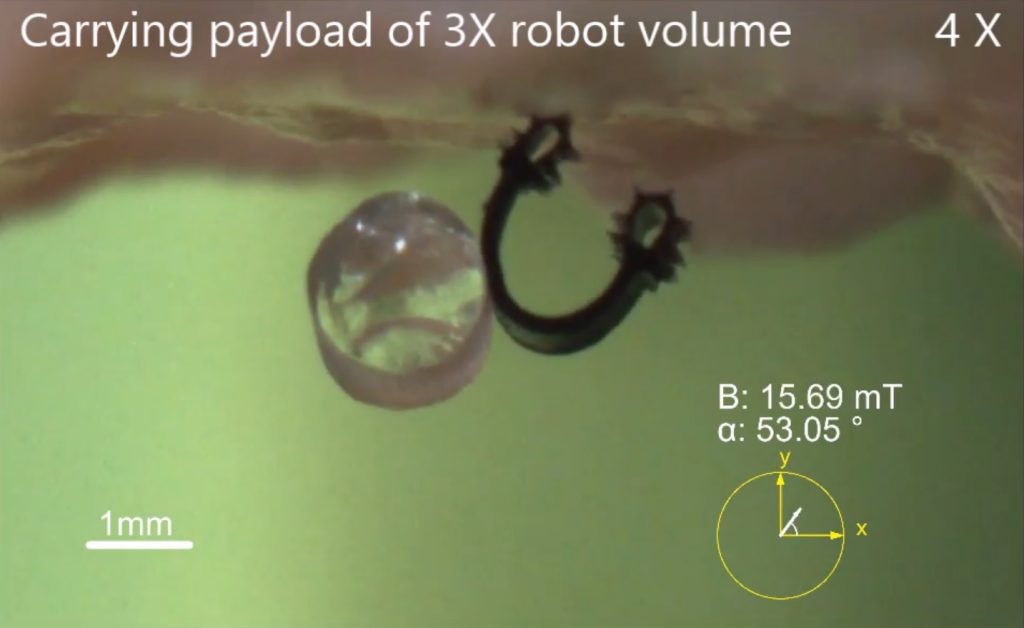
Stuttgart (Germany) Scientists at the Max Planck Institute for Intelligent Systems (MPI-IS) have developed a mini robot that can move through the human body in a targeted manner. That way it could be used for medical treatments or drug delivery. While other soft robots can handle complex environments wirelessly, they have not yet been able to attach to unstructured three-dimensional surfaces and remain there for long periods of time.
According to their publication in the journal Science Advances (doi: 10.1126/sciadv.abn3431), the researchers therefore had to develop a new technique that would enable their 3.7 mm long, 1.5 mm wide and 150 microns (μm) thin robot to move and cling to different surfaces. In addition, the robot must be able to hold its position even when liquids are flushed over it.
The challenge was that the mini-robot must be able to adhere to difficult surfaces such as human tissue, but must not damage the tissue in the process. He must also be able to release his grip when it is not needed.
The movement of the robot is similar to that of small caterpillars, which in certain situations only move forward with the ends of their bodies, while the feet of the respective end of their bodies cling to the surface or loosen themselves.
Instead of small feet, however, the researchers use micro-spikes at both ends of their soft robot. They can penetrate a layer of mucus, such as that found in the intestines. Their adhesion is reinforced by the use of the bioadhesive chitosan, which is based on chitin. This means that a high level of permanent adhesion is also possible on wet surfaces. The researchers also tested various other “foot pads” for use on dry surfaces, for example.
The targeted movement of the robot takes place via an external magnetic field that controls the elastic ferromagnetic robot. It is thus possible to deform its structure as desired and set it in motion. The robot can be detached by a targeted rotation in the body.
So far, the robot has been tested within the lungs and digestive tract of a pig. In doing so, they succeeded in moving the robot precisely to the desired position and allowing it to remain there. They also tested how much “load capacity” the robot has. According to the researchers, it can transport objects up to three times its own size and up to 20 times its own weight.
The science team sees this as a new way of transporting therapeutic drugs to different parts of the body. However, this requires further work on the robot. Then it would also be conceivable that the robot would also carry out medical treatments such as biopsies.
Researchers are working since years on many different types of tiny robots for use in the medical field, some artificial, others are created as biological robots. In the future, these little helpers could even be able to conduct operations without surgery.






